As you ponder the future of data enrichment, envision a landscape shaped by cutting-edge technologies and innovative strategies. From machine learning algorithms to blockchain integration, the possibilities seem endless. But what does this mean for businesses striving to stay ahead in an increasingly data-driven world? Stay tuned as we explore six key insights that offer a glimpse into the evolving realm of data enrichment, where efficiency, security, and value creation converge to redefine the way we harness and leverage data.
Emerging Trends in Data Enrichment
With the rapid advancements in technology, data enrichment is witnessing a significant transformation, fueled by emerging trends that are reshaping the landscape of information processing. Machine learning algorithms play a vital role in this evolution, enabling organizations to extract valuable insights from vast amounts of data. These algorithms efficiently analyze patterns and trends within datasets, enhancing the accuracy and efficiency of data enrichment processes.
One key trend driving this transformation is the focus on data quality improvements. By employing advanced machine learning algorithms, organizations can now automatically identify and rectify errors, inconsistencies, and missing information within their datasets. This proactive approach not only ensures that the enriched data is reliable and up-to-date but also streamlines the overall data enrichment process.
Big Data and Data Enrichment
The integration of big data analytics with data enrichment processes has become a crucial aspect of modern data management strategies. Machine learning applications play a significant role in enhancing data enrichment by automating the process of identifying patterns and trends within large datasets. By utilizing advanced algorithms, machine learning can help extract valuable insights from unstructured data sources, improving the accuracy and efficiency of data enrichment procedures.
Data visualization techniques further enhance the interpretation of enriched data by presenting complex information in a visually intuitive manner. Through interactive graphs, charts, and dashboards, organizations can gain a comprehensive understanding of enriched data, enabling them to make informed decisions based on actionable insights. These visualization tools not only simplify the analysis of enriched data but also facilitate effective communication of findings to stakeholders across different departments.
Cloud-Based Data Enrichment Solutions
Cloud-based data enrichment solutions have revolutionized the way organizations manage and optimize their data processes. These solutions offer cost efficiency benefits by eliminating the need for on-premises infrastructure and reducing maintenance costs associated with hardware and software. Additionally, cloud-based data enrichment tools provide scalability, allowing organizations to easily expand their data processing capabilities as needed without significant upfront investments.
However, with the convenience of cloud-based data enrichment comes data privacy concerns. Organizations must ensure that sensitive information is adequately protected when utilizing these solutions. This involves implementing robust security measures, such as encryption and access controls, to safeguard data from unauthorized access or breaches.
Blockchain’s Impact on Data Enrichment
Blockchain technology has emerged as a disruptive force in the realm of data enrichment, offering a decentralized and transparent approach to data management. When it comes to privacy implications, blockchain’s inherent design ensures that data stored on the chain is secure, immutable, and traceable, enhancing data integrity and reducing the risk of unauthorized tampering. This is particularly relevant in scenarios where sensitive information needs to be enriched without compromising confidentiality.
However, despite its potential benefits, the adoption of blockchain in data enrichment also raises security concerns. While the technology offers robust protection against data tampering, vulnerabilities in smart contracts, private key management, and network consensus mechanisms can still be exploited by malicious actors. It is crucial to address these security gaps through rigorous testing, encryption protocols, and continuous monitoring to safeguard the integrity of enriched data.
Iot Data Enrichment Strategies
Implementing effective IoT data enrichment strategies is paramount in maximizing the value of data generated by interconnected devices. Machine learning plays a pivotal role in IoT data enrichment by enabling systems to learn from data patterns and make informed decisions. By utilizing machine learning algorithms, IoT devices can categorize and structure raw data for easier analysis and interpretation. Predictive analytics further enhances IoT data enrichment by forecasting future trends based on historical data, allowing businesses to proactively address emerging issues and opportunities.
To implement successful IoT data enrichment strategies, organizations need to integrate machine learning algorithms that can adapt to evolving data sets and provide real-time insights. By leveraging predictive analytics, companies can anticipate maintenance needs, optimize resource allocation, and improve overall operational efficiency. These strategies not only enhance the quality of IoT data but also enable organizations to make data-driven decisions that drive innovation and competitiveness in the rapidly evolving IoT landscape.
Automation in Data Enrichment Processes
To streamline and optimize data enrichment processes, automation plays a crucial role in increasing efficiency and accuracy. Through the integration of machine learning and artificial intelligence technologies, organizations can automate the identification, collection, and enrichment of data with minimal human intervention. Machine learning algorithms enable systems to learn from data patterns and make predictions or decisions without explicit programming, enhancing the speed and accuracy of data enrichment processes. Artificial intelligence further enhances automation by enabling systems to adapt to changing data requirements and improve enrichment strategies over time.
Automation in data enrichment processes offers several benefits, such as reducing manual errors, increasing scalability, and accelerating the time-to-insight. By automating repetitive tasks like data normalization, cleansing, and deduplication, organizations can focus on deriving valuable insights from enriched data rather than spending time on mundane data processing activities. Additionally, automation ensures consistency in data enrichment methodologies, leading to more reliable and standardized datasets for analysis and decision-making. Embracing automation powered by machine learning and artificial intelligence is key to unlocking the full potential of data enrichment in the digital age.
Frequently Asked Questions
Can Data Enrichment Solutions Predict Future Market Trends Accurately?
Can data enrichment solutions accurately predict future market trends? By leveraging advanced algorithms and historical data, they enhance accuracy. However, ensuring data privacy and compliance remains crucial to maintain trust and legality in market forecasting.
How Does Data Enrichment Ensure Data Privacy and Security?
To ensure data privacy and security, data enrichment employs robust encryption methods that safeguard sensitive information. Your data protection is prioritized through advanced encryption algorithms, providing a secure environment for your valuable data assets.
Are There Any Ethical Concerns Related to Data Enrichment Practices?
Ethical implications arise in data enrichment due to potential privacy violations and bias if not regulated. Maintaining regulatory compliance is crucial to address concerns like data accuracy and transparency, ensuring ethical data practices are upheld.
What Are the Potential Challenges in Implementing Data Enrichment Strategies?
Like navigating a complex maze, you’ll find data accuracy crucial for success. Integration challenges may arise due to varied sources and formats. Addressing these hurdles with precision and adaptability is key for smooth implementation.
How Can Companies Measure the ROI of Data Enrichment Investments?
To measure ROI of data enrichment, conduct cost benefit analysis comparing initial investment to enhanced performance metrics. Utilize key performance indicators for effectiveness assessment. Regularly review data quality improvements against financial gains for accurate evaluation and future decision-making.




